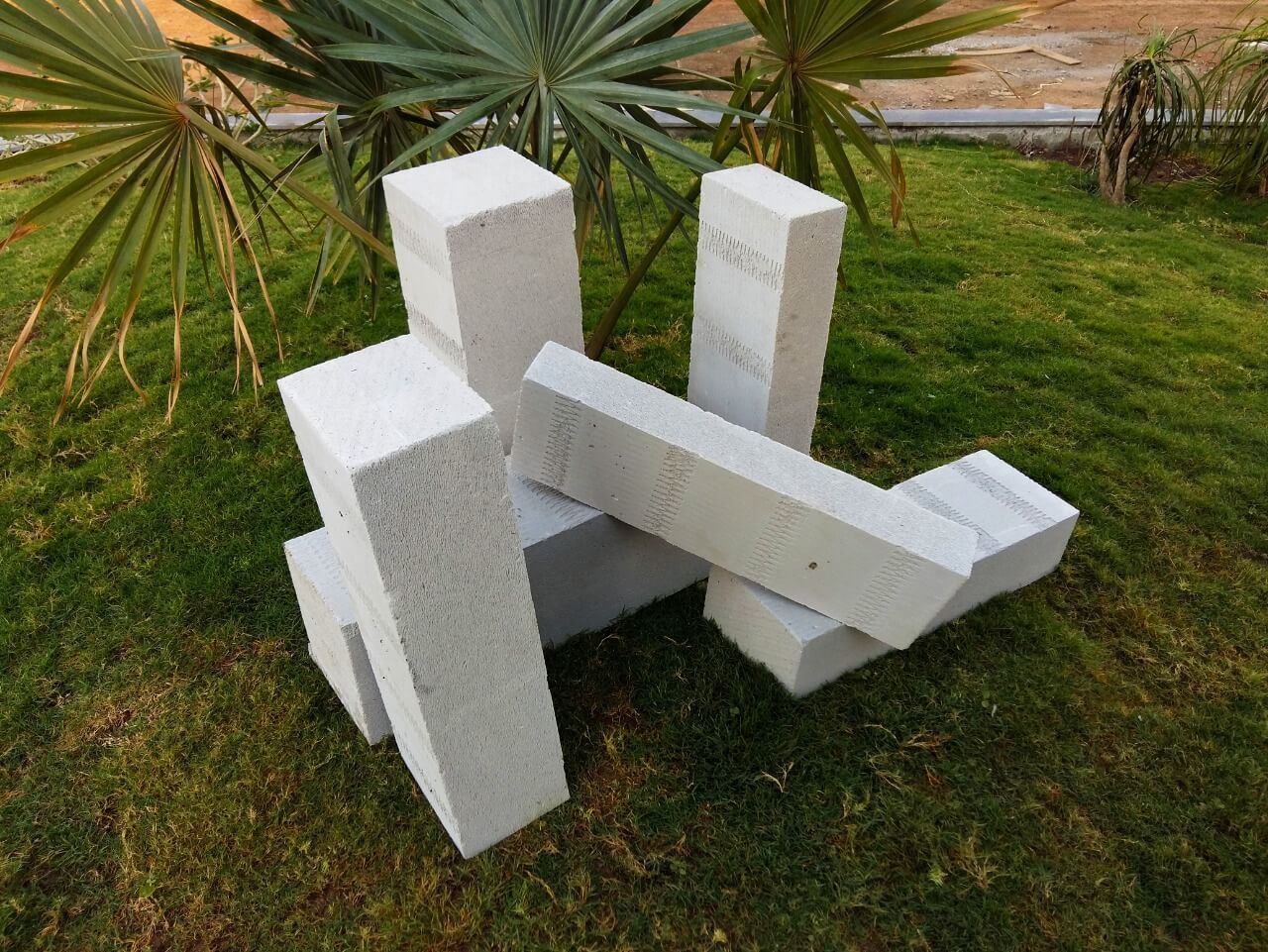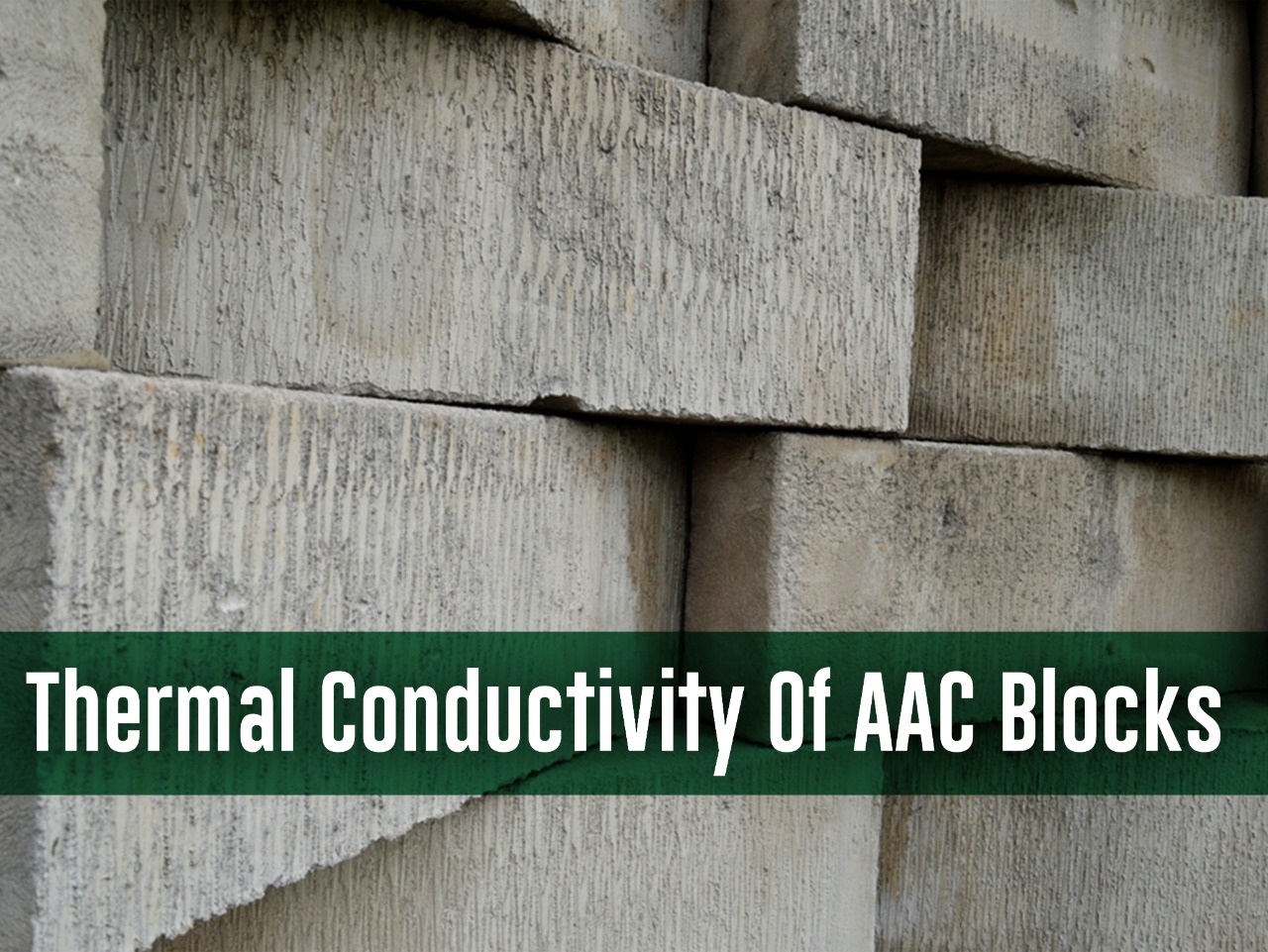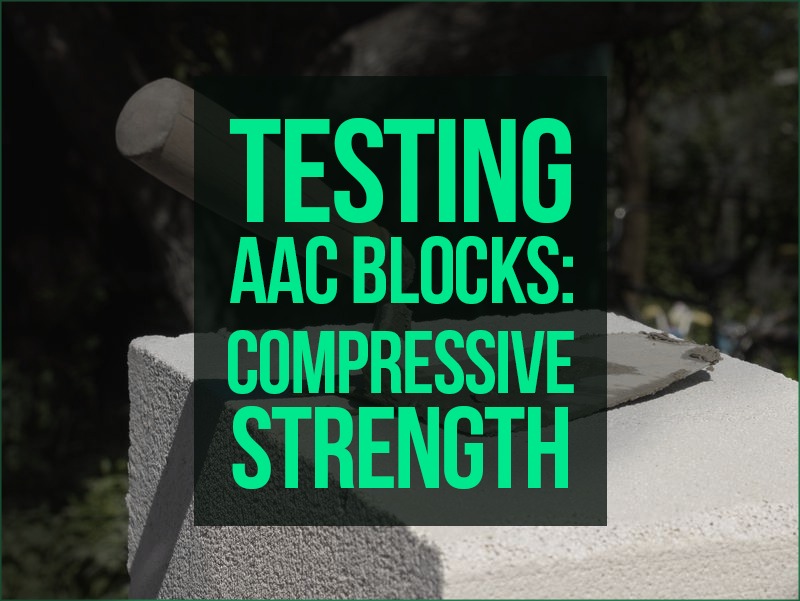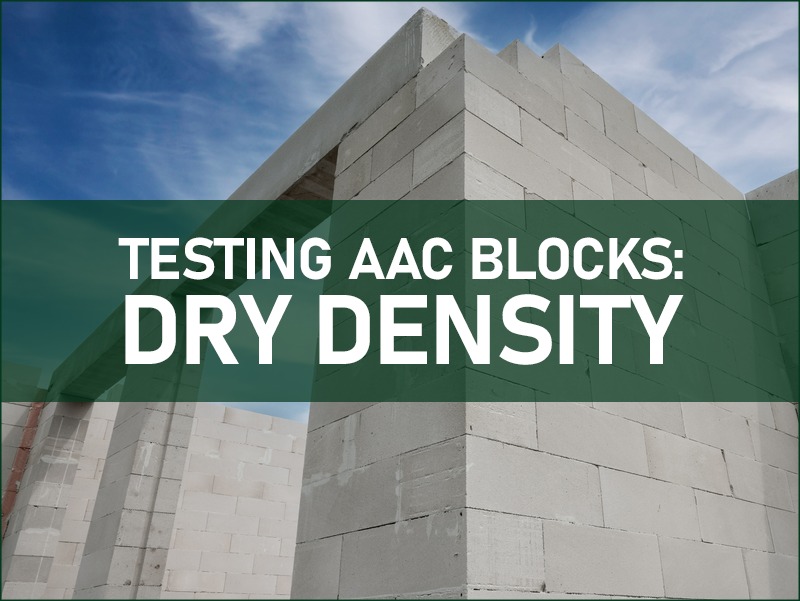.webp)
How Are AAC Blocks Made? | Manufacturing Of AAC Blocks | Ecorex
AAC Blocks are Autoclaved aerated concrete and are known by other names like autoclaved cellular concrete, autoclaved lightweight concrete, porous concrete, aircrete, etc. These blocks are lightweight and are precast foam concrete. They are environmentally friendly and are reusable, non-toxic, renewable, and recyclable. There are a lot of benefits of using the AAC Blocks.
AAC blocks have properties similar to wood and were developed in 1924 by a Swedish architect. Autoclaved Aerated Concrete is a kind of certified green building material which is reliable and is 3 times lighter when compared to the traditional red bricks. These AAC blocks have properties like thermal insulation, and solid structure and they are easy to work with.

Ingredients of AAC Blocks
- Fly ash is major industrial waste that is generated in coal-fired power plants. The density ranges from 600kg/cm3 to 1400kg/cm3. The insulation and fire-resistant properties of AAC blocks are attributed to the presence of fly ash.
- The cement used for manufacturing AAC blocks is OPC (Ordinary Portland Cement) 43-grade or 53-grade cement which is also used as a binding material. Cement is stored in a silo fabricated from mild steel (MS).
- Limestone is a significant ingredient of AAC blocks. Lime powder strengthens the structure of AAC blocks and provides it with the aeration effect. The lime is obtained by grinding limestone in the block manufacturing factory or outsourcing it as the lime powder is stored in a silo fabricated from mild steel (MS).
- Industrial Gypsum, which is an industrial waste generated from fertilizer plants, is used in powder form. It is available in abundance.
- Aluminum powder/paste is a foaming agent responsible for creating air voids inside the blocks. It is easily available from various manufacturers.
.jpeg)
Manufacturing Process: AAC Blocks
The AAC blocks are manufactured systematically as the process of manufacturing involves a series of operations beginning from, the feeding of ingredients to the stacking of blocks. These blocks are known for their unique characteristics and hence every stage is associated with strict manufacturing quality guidelines for ensuring requisite strength and density. The following steps are followed in the manufacturing process of AAC blocks.
- Preparation of raw material
- Dosing & mixing
- Moulding, rising and pre-curing
- De-moulding and Wire cutting
- Autoclaving
Preparation of raw material
The manufacturing process of AAC blocks starts with the preparation of raw materials.
The above-mentioned material is procured from different sources and changed to the desired form. By mixing fly ash with water, fly ash slurry is made. Other ingredients like lime powder, cement, gypsum and aluminum powder are mixed with the slurry in quantities as per the formula.
.jpeg)
Dosing and Mixing
The next step after the preparation of raw material in the process of manufacturing AAC blocks is dosing and mixing, which defines the quality of final bricks. A dosing and mixing unit is used to develop the correct mix to produce Autoclaved Aerated Concrete (AAC) blocks. Various control systems are used to maintain the appropriate ratio of all ingredients as per the selected formula which is crucial to ensure uniform quality of production. The raw material is weighed and poured into the mixing drum, one after the other.
The fly ash slurry is stored in a container that is connected to a mixing drum. All other ingredients like lime powder, gypsum, and cement are fed into the mixing drum in the correct proportion using screw conveyors. The proportioned ingredients are mixed thoroughly in the mixing drum and are simultaneously fed. Aluminium dosing is done through a feeding attachment and is controlled according to the requirement. The ingredients are mixed and poured into the moulds.
The entire process of dosing and mixing is completely automated and minimum human intervention is required. This operation is monitored using control systems integrated with a PLC program and human intervention is introduced whenever required in case of emergency.
Moulding, Rising and Pre-curing
Moulding
The AAC blocks are cast into moulds which are cleaned and coated with oil to avoid the ingredients from sticking to the surface of the mould. The size of the moulds varies as per the capacity of the plant. Sticking can hamper the finishing of the blocks.
.jpeg)
Casting
After the mix is ready, it is poured into the moulds and is called casting moulds or casting. Inside the moulds, the aluminium reacts with calcium hydroxide (lime) and water and produces numerous unconnected hydrogen bubbles. The size of the bubble is usually 2-5mm.
Rising
Forming of the Bubbles leads to the expansion of the slurry almost twice that of the original volume. This process is known as rising. These hydrogen bubble spaces contribute to the lightweight and insulation characteristic of AAC blocks.
Pre-curing
Once the rising process is over, the green cake is allowed to settle and cure for some time. This ensures the cake strength required for wire cutting. The time required for pre-curing can vary from 1-3 hours (165 minutes) or more depending on weather conditions. This can also be done by indirect heating or maintaining a constant temperature in the pre-curing area to ensure that the blocks gain some strength.
At the end of the pre-curing process, the green cake is hard enough (hardness ranging from 150 to 170 mm) to be wire cut as per requirements. After the pre-curing process, the green cake is strong enough for a wire cut.
.jpeg)
Demoulding and Cutting
The pre-cured moulds are carried to the cutting area and lifted using a crane. The moulds are removed and the green cake is wire cut as per the required dimensions.
The wire cutting process is performed in two stages. The first stage is a vertical cut and the second stage is a horizontal cut. This stage is crucial as we achieve dimensional perfection after de-moulding and cutting the green cake and AAC blocks are finished.
The process needs utmost care and precision or else it may lead to rejection of the material. The cutting wires in both stages can be adjusted offline to get desired thickness and height of AAC blocks.
.jpeg)
Autoclaving
Autoclaving is the final step in the manufacturing of AAC Blocks. The wire cut blocks are then sent to the autoclaved chamber for a high temperature and high-pressure steam curing. This process gives durability and strength to these blocks.
The temperature for baking of the bricks is maintained at around 195 degrees and a pressure of 12 bars for the steam curing is applied. This process takes from 8-12 hours. The blocks then achieve their required strength and also curing in an autoclave reduces drying shrinkage. The autoclaved blocks are sent to the packing line.
.jpeg)
Conclusion
AAC blocks have several advantages over the traditional red bricks. The exceptional performance of AAC blocks makes them an ideal solution for modernizing construction in an environmentally friendly manner. By choosing AAC blocks which are eco-friendly construction materials, we are not just turning to sustainability, but also contributing our bit towards environment conservation.
Recent blogs

Thermal Conductivity Of AAC Blocks | U value and R value | ECOREX
AAC blocks were invented for keeping the building thermally insulated and keeping the heat out from the building. Let's dig deep into Thermal Conductivity of AAC Blocks.

Top 5 AAC Block Manufacturers In India
Here is a list of the top 5 AAC block manufacturers in India. Because as a property owner, it is advised to have a working knowledge of different AAC block manufacturers.

Testing AAC Blocks: Compressive Strength | Ecorex
One of the most important characteristics of AAC blocks for the user is their compressive strength. Drying Shrinkage, Dry Density, as well as Compressive Strength, have different test procedures. Let's find out more together.

Testing AAC Blocks: Dry Density | Ecorex
Most of the popularity that AAC blocks have gained over the years is due to their unique characteristic of being lightweight. This is checked with the help of a dry density test.
